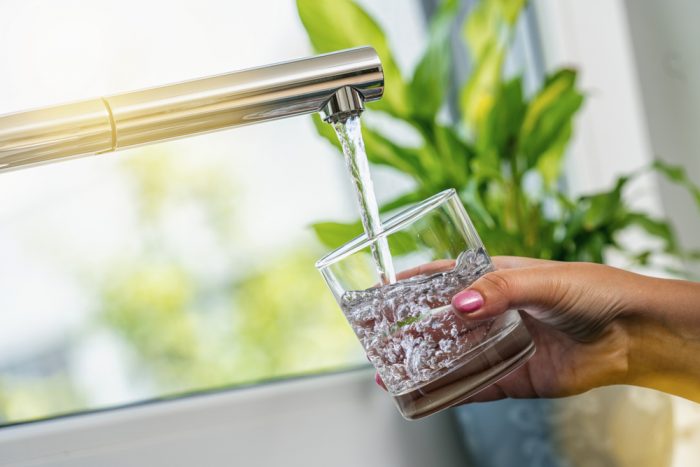
Have you ever gone to your sink to fill a cup of water, only to find that the water is cloudy? Opaque water can definitely be concerning, especially if you’re using it for consumption. The only way to ensure you’re getting perfectly clear water is by drinking spring or purified water out of a dispenser or bottle. However, using this kind of water is not always cause for concern. Keep reading to learn more about cloudy tap water.
Why Is My Tap Water Cloudy?
The most frequent cause of cloudy water is the amount of air in the water sample. If your tap’s pressure is high and the water comes out quickly, you’ll notice it’s opaque immediately. Within about a minute, the bubbles and cloudiness should settle, and you have nothing to worry about. However, if the cloudiness never settles, there are a few other causes for this strange, yet common, occurrence.
First, determine if you’re having this issue from every faucet, or just one. If every tap in your home is giving you milky looking water, it’s likely due to a pressurized municipal system or a sign of hard water. If just one faucet is producing it, that single fixture is probably the issue.
Another factor to consider is that a variety of metals, minerals, and bacteria may also be present in your water, causing a cloudy look. You’ll may even see that the water is slightly discolored a brown, yellow, or even green shade.
Can You Drink Cloudy Water?
Drinking cloudy water is perfectly safe as long as it’s not discolored, implying bacteria is present. Brown, yellow, or green water may be harmful to ingest and is not suggested.
How Does Hot Water Become Cloudy?
If you have a specific tap in your home that serves hot water – like the ones conveniently placed over a stove for cooking – then it’s often cloudy.
You know that water is made up of H20: hydrogen and oxygen. When water freezes and turns to ice, these minerals expands. The same process happens when water is heated. As it heats and the minerals “inflate”, it traps other gases in it. The water molecules grow, capture other minerals, and then trap them in. What we end up seeing from this process is bubbles.
When the water is released from your tap, the pressure decreases, and the air bubbles are released into the air. This is when the cloudiness “settles”.
How Do you Resolve Cloudy Water?
Is your milky looking water coming from one faucet? If so, it may just need to be cleaned. You can do this by taking off the aerator, clean it with a half-vinegar/half-water solution, rinse it, and re-install it. This should remove the hard water build up causing the cloudiness. You might also want to find out how to purify your own water at home.
If all of your home’s taps are producing this kind of water, it might be time to call your supply company or bureau. It’s possible that there is a leak, or the company is performing maintenance.
One of the easiest ways to ensure your hot water isn’t cloudy is by using an in-home water dispenser, like the ones Lipsey offers. Lipsey mountain spring water is sourced from a cold, deep rock spring nestled high in the Blue Ridge Mountains of North Carolina.
Our water dispensers have a hot water tap, perfect for when you need to make a quick tea, soup, or oatmeal. Contact us to try a free, two-week trial of a water dispenser in your home.
